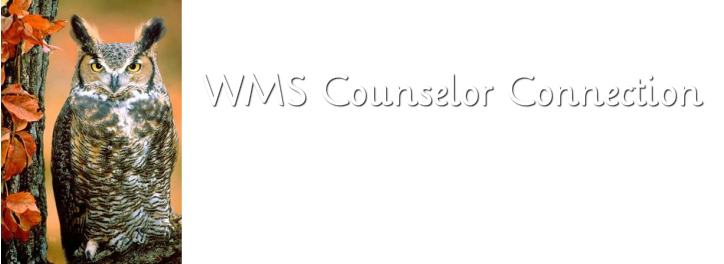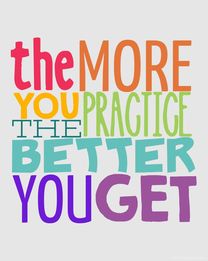Teens & COVID-19: Challenges and Opportunities During the Outbreak
Click here for the article:
Click here for the article:
Click here for Truth Initiate information about FREE toolkit to QUIT e-cigs and vaping.
truthinitiative.org/news/first-its-kind-free-e-cigarette-quit-program-now-available-young-vapers-looking-help
truthinitiative.org/news/first-its-kind-free-e-cigarette-quit-program-now-available-young-vapers-looking-help
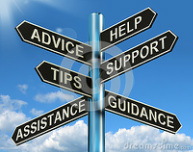
Middle school years are an exciting time. Students are developing, changing, growing, and often need assistance with navigating their course. The school counselor is available to support students, staff, and parents/guardians in achieving a successful, positive school experience. Some of the reasons students may seek school counseling services:
- academic issues
- behavior/social challenges
- interpersonal relationship/friend issues
- peer conflicts
- home/family concerns
- emotional/mental health
- goal setting

Resource for parents on setting up a smooth transition and supporting their middle school student.
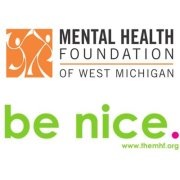
Thanks to a grant proposed by Mrs. Schreiber and awarded by the WUEF in 2013 and supported
by the Kiwanis Club of Wayland for 2014-15, WUMS is a "be nice" school.
http://www.themhf.org/education/be_nice1
by the Kiwanis Club of Wayland for 2014-15, WUMS is a "be nice" school.
- Notice
- Invite
- Challenge
- Empower
http://www.themhf.org/education/be_nice1
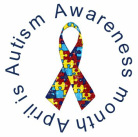
Topic of the Month - April:
Autism
The CDC identifies 1 in 68 American children on the Autism Spectrum. ASD is a complex social cognition disorder that impacts communication, social interaction, behavior, and learning. Symptoms of autism differ from individual to individual. There is a WIDE range (mild - severe) thus why the term SPECTRUM is used.
Learn more about ASD (including Asperger syndrome) at:
http://www.autismspeaks.org/what-autism
http://www.autism-society.org/
Autism
The CDC identifies 1 in 68 American children on the Autism Spectrum. ASD is a complex social cognition disorder that impacts communication, social interaction, behavior, and learning. Symptoms of autism differ from individual to individual. There is a WIDE range (mild - severe) thus why the term SPECTRUM is used.
Learn more about ASD (including Asperger syndrome) at:
http://www.autismspeaks.org/what-autism
http://www.autism-society.org/
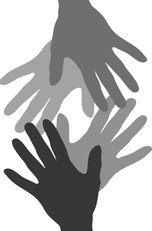
Topic of the Month - March
What is Self-Injury?
Self-injury is defined as intentional harm to one’s body. It can also be known as self-harm, self-abuse, self-mutilation, cutting, or burning. Self-injury is not an attempt at suicide, a crazy act, or a cry for help. It is an unhealthy coping mechanism used when someone is struggling with intense internal feelings of pain, anger and frustration and seeks to externalize those feelings. If you or a friend is self-harming, please speak to a trusted adult immediately.
People who self-harm can be treated and learn healthy ways to cope with their feelings.
March is Self-harm awareness month
Online Resources:
http://helpguide.org/mental/self_injury.htm
http://www.webmd.com/anxiety-panic/guide/self-injury
What is Self-Injury?
Self-injury is defined as intentional harm to one’s body. It can also be known as self-harm, self-abuse, self-mutilation, cutting, or burning. Self-injury is not an attempt at suicide, a crazy act, or a cry for help. It is an unhealthy coping mechanism used when someone is struggling with intense internal feelings of pain, anger and frustration and seeks to externalize those feelings. If you or a friend is self-harming, please speak to a trusted adult immediately.
People who self-harm can be treated and learn healthy ways to cope with their feelings.
March is Self-harm awareness month
Online Resources:
http://helpguide.org/mental/self_injury.htm
http://www.webmd.com/anxiety-panic/guide/self-injury

Topic of the Month - February
Getting Along at WMS
We can be friends. That means:
We can be classmates, but not friends. That means:
Being Enemies. If we act like enemies there will be consequences. Being an enemy means:
Getting Along at WMS
We can be friends. That means:
- You hang out together
- You help each other
- You joke with each other
- ·You stick up for each other
- They like you and you like them
- You trust each other
We can be classmates, but not friends. That means:
- We respect each other
- We are polite to each other
- We don’t joke around
- We do not talk about each other
- We are not mean to each other
- We help each other when needed
- We do not stop the other person from having friends
- We do not try to hurt the other person
Being Enemies. If we act like enemies there will be consequences. Being an enemy means:
- Trying to hurt the another student (physically or verbally)
- Making fun of the other person
- Stopping the other person from having friends
- Trying to get someone in trouble for something they didn’t do
- Pushing/shoving in the halls
- Posting and texting negative comments/pics about someone
- Intimidating someone with body language or posturing

Topic of the month, December/January - SAD (seasonal affective disorder)
Ever heard of the term Winter blues? As winter approaches and daylight hours decrease approximately 3-5% of teenagers experience Seasonal Affective Disorder.
Symptoms include:
For more information on Seasonal Affective Disorder:
http://kidshealth.org/teen/your_mind/mental_health/sad.html#a_What_Is_Seasonal_Affective_Disorder_
Ever heard of the term Winter blues? As winter approaches and daylight hours decrease approximately 3-5% of teenagers experience Seasonal Affective Disorder.
Symptoms include:
- Changes in mood, such as irritability and sadness
- Increased crying
- Fatigue or loss of energy
- Increased sleep and difficulty waking in the morning
- Increased appetite and ingestion of more carbohydrates
- Difficulty concentrating
- Withdrawal from activities that are usually found to be enjoyable.
For more information on Seasonal Affective Disorder:
http://kidshealth.org/teen/your_mind/mental_health/sad.html#a_What_Is_Seasonal_Affective_Disorder_
